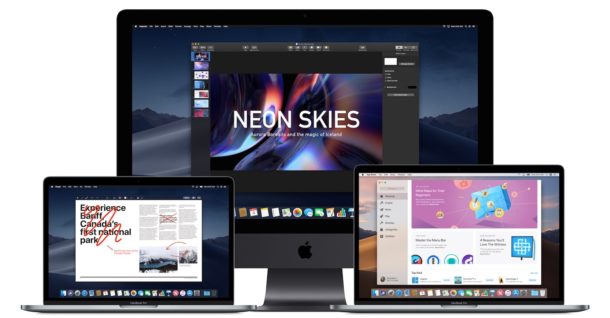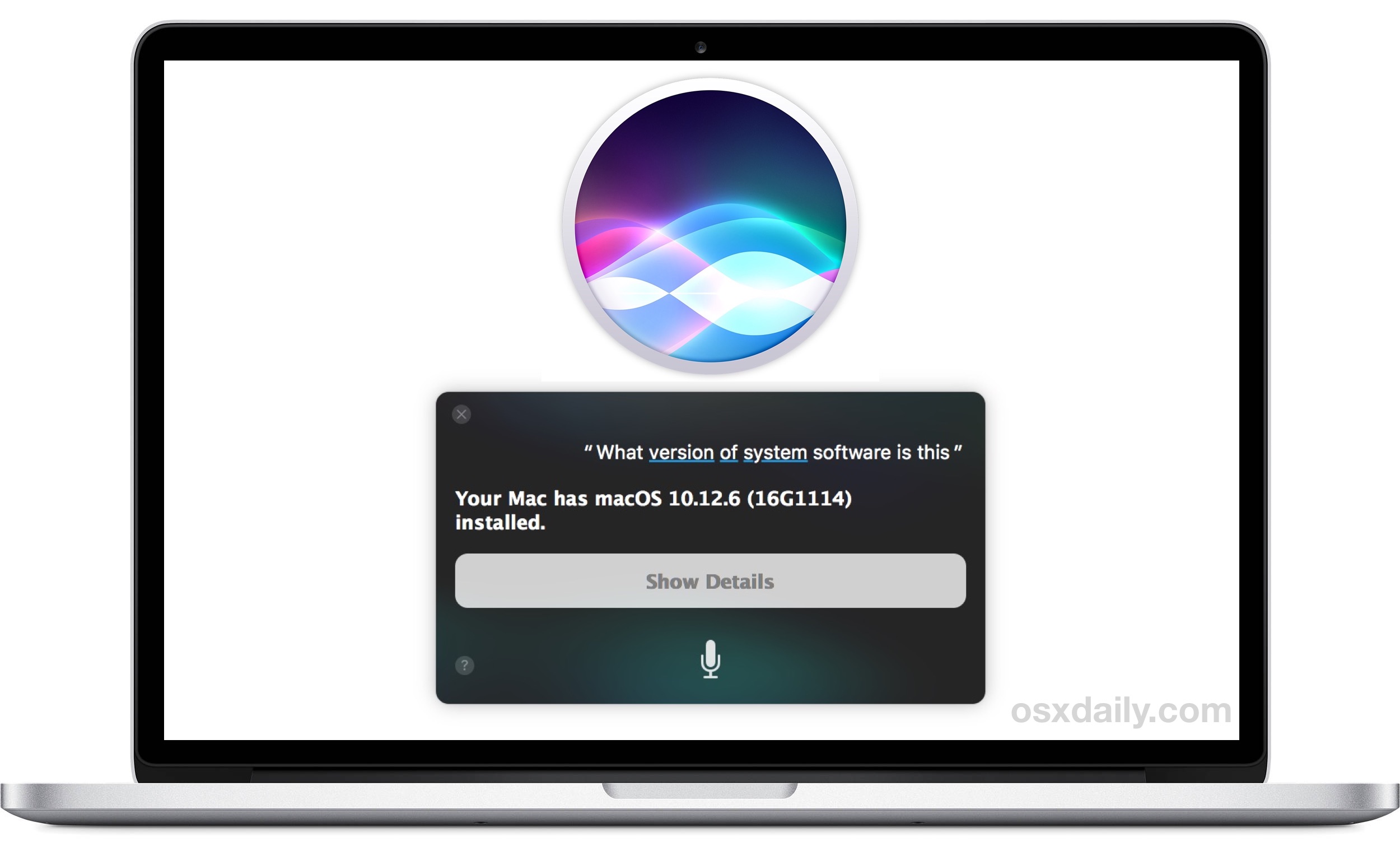So, it was the end of the line for my 27″ 2011 iMac. After 7 years of service, the new OS (MacOS 10.14 “Mojave”) wasn’t going to be able to be installed on the old faithful. There’s some tech reasons for that – Apple moved to minimum standard for graphics cards for their system (they have to support Metal). While there’s external GPU’s for my iMac, I haven’t seen one that supports Mojave. And, even if it did, I probably can’t afford it.
MacBook Pro with Retina display, macOS High Sierra (10.13.6) Posted on Sep 30, 2018 12:38 AM. If you don’t have Mojave supported Mac, you can download the Mojave Installer App using patcher tool. Open the macOS Mojave patcher tool. If it doesn’t open and says it is from an unidentified developer, right click on the tool’s icon and click on “Open” from sub-menu and then enter your Mac’s Admin name and password.
And I certainly can’t afford a new Mac at the moment.
The is a bit of an issue, since I’ve got to be able to compile a project for release very soon. Well… shit.
Fortunately, there’s always someone somewhere that wants to get just a little more life out of their machine – in this case, the Mojave Patcher will do some trickery to load MacOS on a machine that’s not supposed to have it. Nice. Though, reading the notes, it mentions machines with a Radeon 5xxx or 6xxx series GPU had weird colors. Well, how bad could it be.
The answer is very. But, there’s a simple fix (for me, at least). Typically, I run dual screen. When starting the process, I turned off the second screen and went about installing, getting everything working, and back to developing software. It would be unusable with the “weird colors” if I wanted to do any graphics work.

I turned the second screen back on, which is attached via Thunderbolt to HDMI. Boom – suddenly all of my colors were correct again!
That didn’t solve the other problems, though – hardware acceleration is disabled, which means my fairly snappy iMac runs like a dog. For doing something like writing this blog, it’s fine (I’m using Chrome, though results appear the same in Safari.) I would have said YouTube would be worthless, but actually it seems to run YouTube videos just fine. Same goes for NetFlix, though there’s some issues with the animations for launching a show.
I’m dreading seeing what performance is like running the Android or iOS emulators (if they launch at all.) . I’ll find out what the damage is there tomorrow.
So is Mojave usable on my old machine? Yes. Is the machine still usable? Yeeeaaahhhh… for the most part. I think it’s gonna take me a bit to get used to the laggy interface. Since I have to compile stuff and sign it for the App Stores, I HAVE to run Mojave, otherwise I wouldn’t have bothered with the upgrade. Should you bother with it? Up to you if you’re on an old, unsupported Mac. (Obviously if you’re on a supported Mac, by all means upgrade)
Run into the color issue? Try plugging in a second monitor and see if that does the trick. Honestly, I have no idea why it worked, but it does. 🙂
Two updates to this (and probably some more to come later):
First, scrolling in Safari was laggy and choppy. Dragging windows around was choppy. Quick fix – lower the resolution from the maximum (2560 x 1440) to one step top (1920 x 1080) pretty much eliminated it. Not butter smooth, but a huge improvement on all of them. It’s much more usable.
Now for the “wow, that gets weird” part: the “weird colors” issue reappeared on my main monitor, but the secondary display has the right colors. Reverting back to the previous resolution doesn’t fix it. Definitely a WTF item. 🙂
Today I will tell you how to install macOS Mojave or other fresh macOS on an unsupported Mac using the Mojave Patcher Tool. This utility is available for free. You can see more information and patcher updates here on a dosdude site.
Attention! Do not forget! You carry out all actions with the computer and the program at your own peril and risk! No one is responsible for damage to your computer or loss of data except you! If you have crooked hands, do not grab it!
Read more: How to Install Boot Camp and Install Windows 10 on Mac?
Devices Supported
Early-2008 or newer Mac Pro, iMac, or MacBook Pro:
- MacPro3,1
- MacPro 4.1
- iMac8.1
- iMac9.1
- iMac10, x
- iMac11, x (systems with AMD Radeon HD 5xxx and 6xxx series GPUs will be almost unusable when running Mojave. More details are located in the Known Issues section below.)
- iMac12, x (systems with AMD Radeon HD 5xxx and 6xxx series GPUs will be almost unusable when running Mojave. More details are located in the Known Issues section below.)
- MacBookPro 4.1
- MacBookPro5, x
- MacBookPro6, x
- MacBookPro 7.1
- MacBookPro8, x
Late-2008 or newer MacBook Air or Aluminum Unibody MacBook:
- MacBookAir2.1
- MacBookAir3, x
- MacBookAir4, x
- MacBook 5.1
Early-2009 or newer Mac Mini or white MacBook:
- Macmini 3.1
- Macmini 4.1
- Macmini5, x
- MacBook 5.2
- MacBook 6.1
- MacBook 7.1
Early-2008 or newer Xserve:
Mojave On Unsupported Imac
- Xserve2.1
- Xserve3.1
Devices that ARE NOT Supported
2006-2007 Mac Pros, iMacs, MacBook Pros, and Mac Minis:
- MacPro1,1
- MacPro2,1
- iMac4.1
- iMac5, x
- iMac 6.1
- iMac7.1
- MacBookPro1,1
- MacBookPro2, x
- MacBookPro3.1
- Macmini1,1
- Macmini 2.1
- The 2007 iMac 7.1 is compatible if the CPU is upgraded to a Penryn-based Core 2 Duo, such as a T9300
2006-2008 MacBooks:
- MacBook1.1
- MacBook 2.1
- MacBook 3.1
- MacBook 4.1
- 2008 MacBook Air (MacBookAir 1.1)
What Do you Need?

A copy of the macOS Mojave Installer App. This can be obtained from the Mac App Store using a machine that supports Mojave, or by using the built-in downloading feature of the tool. In the Menu Bar, simply select “Tools -> Download macOS Mojave …“
Read more: How to Resize Partition on a Mac?

How to Install macOS Mojave with Mojave Patcher Tool?
- Insert a suitable USB flash drive, open Disk Utility and format it in OS X Extended(journal);
- Open “macOS Mojave Patcher” and specify the path to your macOS Mojave installer;
- Select your flash drive in the list of devices and click “Start”;
- After the operation is complete, restart your Mac with the Option (Alt) button pressed, select your USB flash drive in the boot menu;
- Install macOS on the selected drive partition;
- When the installation process is complete, reboot the device by selecting the installer disk to boot. After that, open the macOS Post Install application;
- In the application window, select your Mac model. You will be offered the best patches based on the selected model. You can also mark other patches as desired;
- Select the partition on which macOS Mojave was installed, and click Patch. When the process is complete, click “Reboot”;
Get Mac Os Mojave On Unsupported Mac
- Rebuilding the cache before rebooting the system may take some time! Note: If for some reason the system does not work correctly after rebooting, restart your Mac with the Option (Alt) button pressed, select the installer disk in the boot menu, then run the Post Install patch again and select the “Force Cache Rebuild” option. Then reboot the device;
- When the Mac reboots, it will launch a fully working version of macOS Mojave.
Conclusion
Mac Os Mojave On Unsupported Macs
When you install the system using the macOS Post Install tool, a program called Patch Updater (Applications/Utilities folder) will appear on your Mac. This app will inform you about patch updates available for your device and offer to install them.